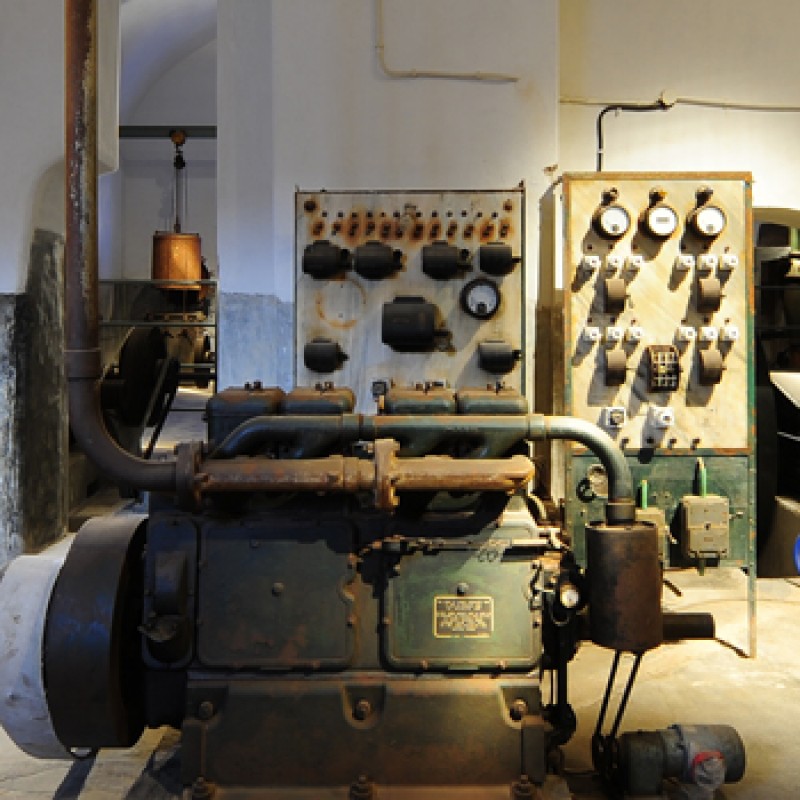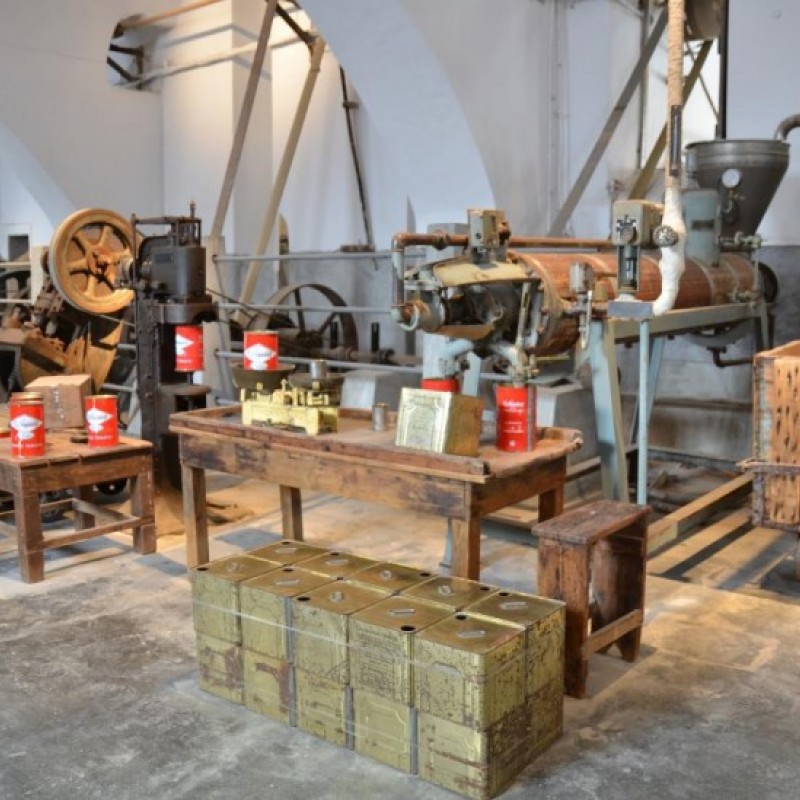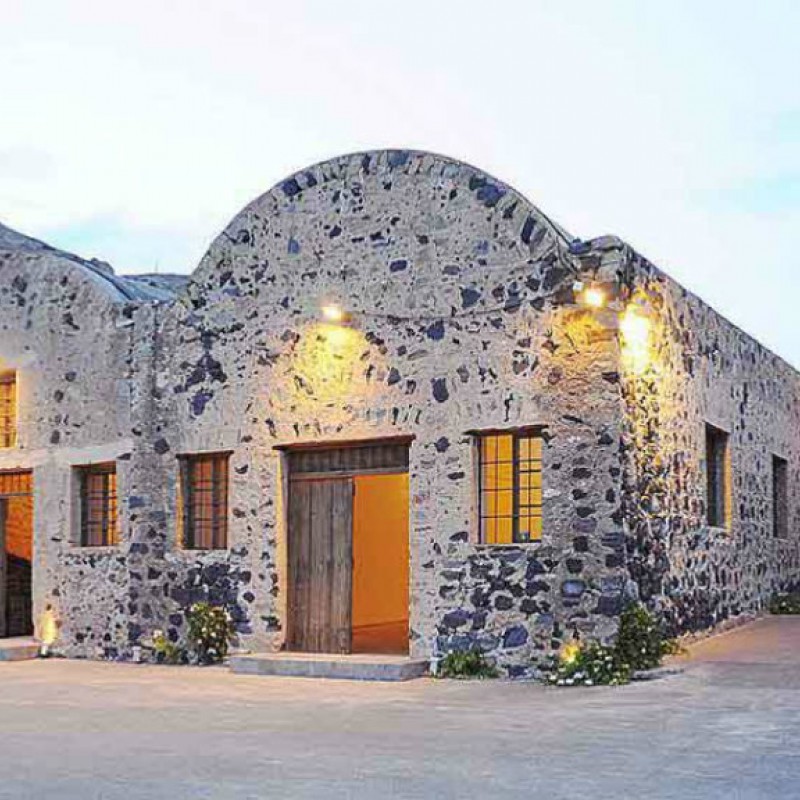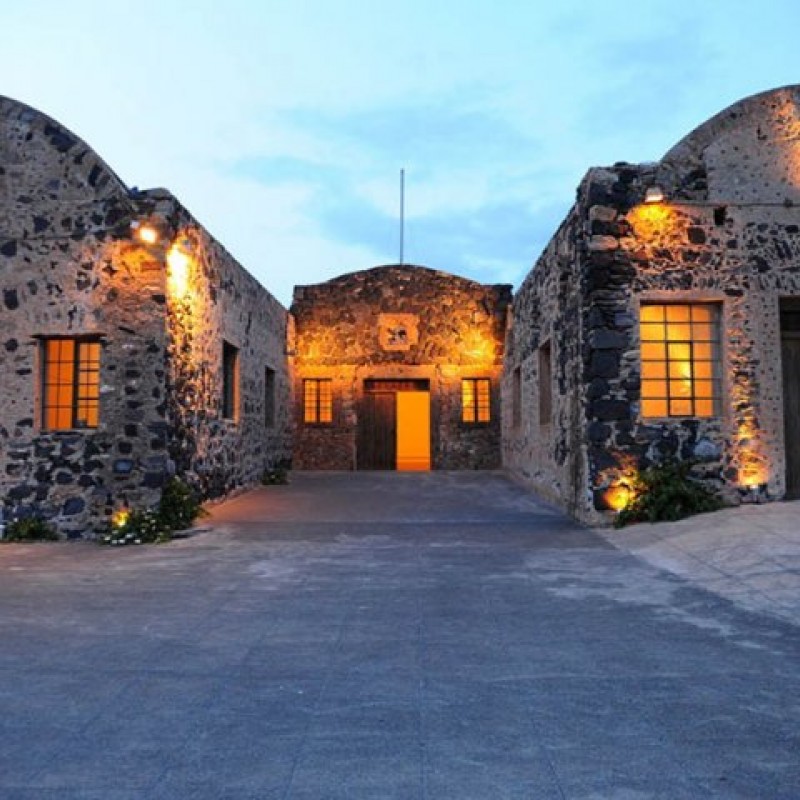Santorini Arts Factory
Vlichada 847 03, Santorini, Greece
| Former Use: | Tomato canning factory | 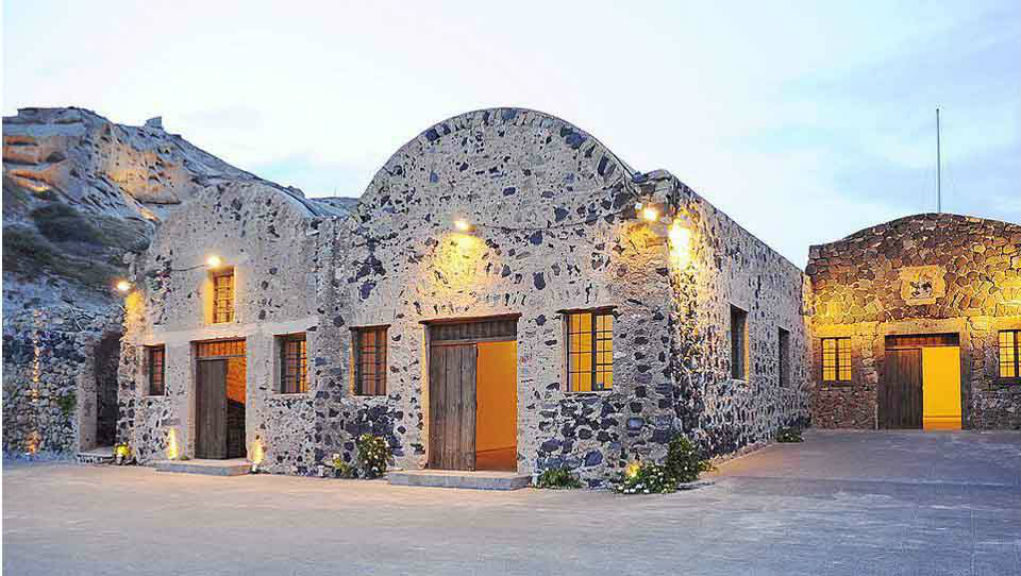 |
| New Use: | Industrial museum, cultural events space | |
| Category: | Culture, Industrial Museum | |
| Website: | https://www.santoriniartsfactory.gr/en/ | |
| Construction year(s): | 1945 - | |
| Reuse year(s): | 2014 - |
Description:
In 1915 Dimitrios Nomikos started the production of tomato paste in a small pre-industrial technology plant in Messaria. In 1922, he builds in Monolithos one of the first tomato canning industry in the Balkans, as he used to say, with state-of-the-art technology of the time, using machinery imported from abroad. In 1945, George Nomikos, son of Dimitrios, builds the plant in Vlychada, the center of the best tomato producing area of the island, with a daily capacity of 3,500 baskets. During the first season the plant operates without even having a roof. The production period extends from June till August, with late tomatoes coming from the area of Pyrgos.
A small canning line within the plant produces the tin cans, while the fuel used in the boiler for the production of steam is originally coal brought from Kymi, Evoia. The plant later operates on fuel oil. The winter of 1952, during a heavy rain, water coming from the road enters the factory, breaking the door of the big yard and floods the plant, carrying away machinery and products into the sea and covering the factory with mud 2.30 meters high. That same year, the warehouses were built on the upper side of the yard for the storage of the products, protecting at the same time the factory from future flooding. In 1956 the plant survived the big earthquake without any damage, while George Nomikos expands his activity on the island of Kos in Dodecanese, by building one more plant. At that time, 9 tomato factories were operating on the island, the production was at its peak and the products - shipped by hand on small boats from the beach - were sold all over Greece, having the advantage of being the earliest production in the market.
In 1971 the first exports to Europe start and ‘D. Nomikos’, incorporated to a ‘societe anonyme’. The company now expands to continental Greece with a new factory in Aliartos, Voiotia. In the years to follow tourism will grow and tomato cultivation will shrink on the island, causing the factory to cease its operation permanently after the last crop of 1981. That year D. Nomikos s.a. opens a new plant in Domokos, Fthiotis, which today, together with the Aliartos plant process in just 12 hours the quantity of the entire production season of the once modern Vlychada factory.
The historical tomato factory of D.Nomikos in Vlychada has been transformed into a modern Industrial Tomato Museum, offering its visitors a journey back to the industrial past of Santorini, by guiding them through the cultivation, processing and production of tomato. Given that tomato is one of the most famous and traditional products of Santorini, makes this experience a unique one. In the museum the visitor experiences all the traditional methods followed by the tomato producers of Santorini and at the same time, becomes acquainted with the museum exhibits.
These include a full range of the processing machinery dating back to 1890, hand-written account books of the plant, a variety of hand-written notebooks regarding various aspects of the factory, old tools, the first labels used, a dated history of the island of Santorini, its inhabitants and their unique tradition as well as audiovisual material with narrations of people who worked in the plant, witnessing their firsthand experiences of a by-gone industrial era. (1)
